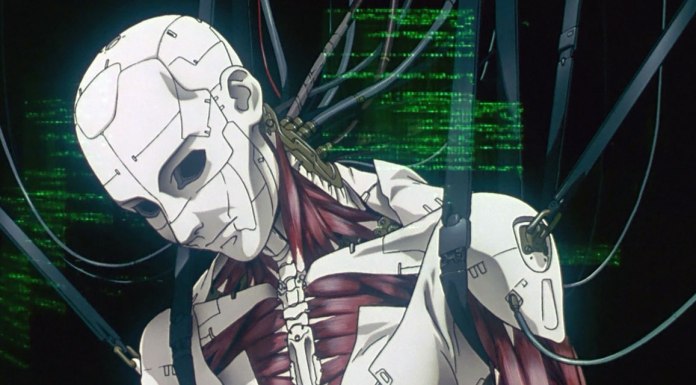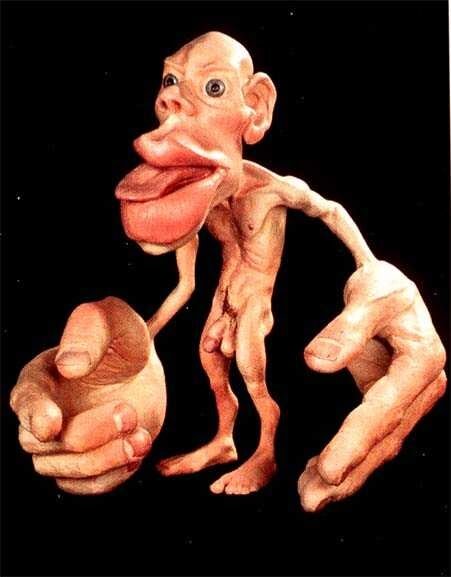Post-humanism
Posthuman practice is the ability to fluidly change perspectives and manifest oneself through different identities. The posthuman, for critical theorists of the subject, has an emergent ontology rather than a stable one; in other words, the posthuman is not a singular, defined individual, but rather one who can “become” or embody different identities and understand the world from multiple, heterogeneous perspectives.”
Wikipedia on Haraway, Donna J, “Situated Knowledges” in Simians, Cyborgs, and Women.
“Becoming-” involves stepping outside of one’s self into another’s. To step in someone else’s shoes. It’s a term often used by and associated with famous philosophical duo: Gilles Deleuze and Felix Guattari.
To step out of the shoes of humanism and biological essentialism, into the shoes of a post/transhumanist. Where a dick and balls represent several things because they are an assemblage.
Becoming-posthumanist. Becoming-posthuman.
Where the human represents an assemblage. Where the human comes to represent it’s many becomings-.
To recognise something as an assemblage is to open up the space for difference. From ‘striated space’ to ‘smooth space‘
This is because becoming– is always a becoming-different.
This is to take ‘actual’ concepts back into the ‘virtual’ and to retrieve them once again. This is what is called de- and re-territorialization by Deleuze & Guattari; philosophers of the Posthuman Subject.

Another example of the Posthuman Subject would be Donna Haraway’s ‘Cyborg Manifesto‘ which –
“In [the Cyborg Manifesto], the concept of the cyborg is a rejection of rigid boundaries, notably those separating “human” from “animal” and “human” from “machine.”

Cyborg is a concept which critiques the idea of a ‘human nature’ and a prioritising of the organic over the inorganic. Cyborg deconstructs the human; not as some established, ‘natural’, essentialist creature.
But as something which cannot be so clearly defined.
Cyborg calls out the human as something which can no longer be separated and distinguished from that which it isn’t.
Specifically, technology.
The human assemblage includes non-human becomings.
Becoming-Cyborg.
For example, the way in which I can safely assume your daily life involves technology. Like your phone. This is one of the many non-human becomings we engage with on a regular basis, a regular becoming-cyborg.
The flesh of your hand caresses the hard plastic and metal of your phone. It’s inorganic screen hits your organic eyes. It’s artificial content sends your brain into a dopamine feedback loop. Cybernetics.
I don’t need to bring up the concept of the fleshlight to drive home the point of how we have already moved beyond a classical concept of humanism, and how instead we are all taking a part in the active becoming of the posthuman cyborg. Actively enjoying the destruction of the borders and limits between human and inhuman.
Mark Fisher calls this the Gothic Flatline, — on which the:
anthropocentric tendency to give agency to inanimate objects is subverted, so that everything — animate or inanimate — is seen as ‘dead’. Rather than privileging human agency over the agency of objects, Mark argues for their radical immanence within the emerging technosphere: the world of cybernetics. He asks, “what if we are as ‘dead’ as the machines”?
https://xenogothic.com/2017/11/06/introduction-to-flatline-constructs/

We are also taking part in what Baudrillard calls the “postmodern hyperreal” in which simulacra rules.
Hyperreality is:
the generation by models of a real without origin or reality”
Jean Baudrillard, Simulacra and Simulation.
Simulacra being these “models of a real without reality.”
Synthetic vaginas. Life on a phone.
We are all already cyborgs. Already a simulacrum of ourselves. Versions of humans with no trace to any human origin or reality.
The homunculus can be called a second-stage simulacrum, The second stage is:
a perversion of reality, this is where we come to believe the sign to be an unfaithful copy, which “masks and denatures” reality as an “evil appearance—it is of the order of maleficence”. Here, signs and images do not faithfully reveal reality to us, but can hint at the existence of an obscure reality which the sign itself is incapable of encapsulating.”
So can the Cyborg be recognised as this second stage simulacrum.

The image of a human half-machine, it appears as a perverse unfaithful copy of a human. But this is only if we truly believe there is even such a thing as a human to begin with.
“Nothing human makes it out of the near future…”
Nick Land, ‘Meltdown’
This is nothing to fear.
